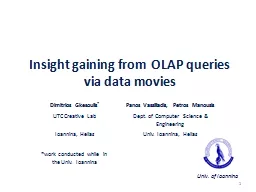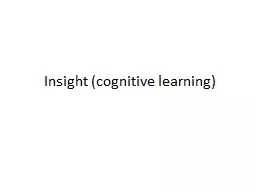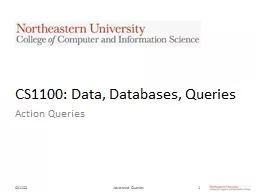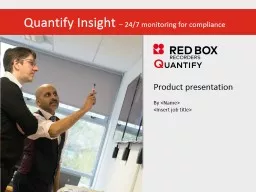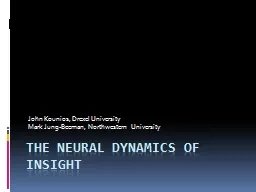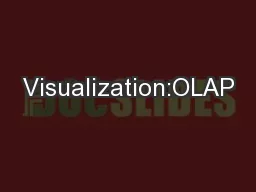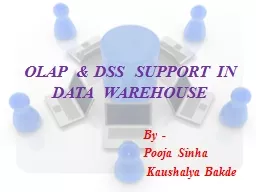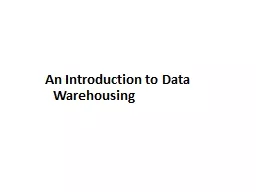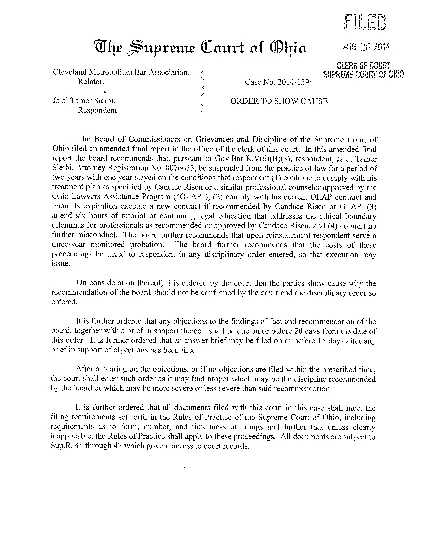PPT-Insight gaining from OLAP queries via data movies
Author : pasty-toler | Published Date : 2016-03-14
Dimitrios Gkesoulis Panos Vassiliadis Petros Manousis UTC Creative Lab Dept of Computer Science amp Engineering Ioannina Hellas Univ Ioannina Hellas work
Presentation Embed Code
Download Presentation
Download Presentation The PPT/PDF document "Insight gaining from OLAP queries via da..." is the property of its rightful owner. Permission is granted to download and print the materials on this website for personal, non-commercial use only, and to display it on your personal computer provided you do not modify the materials and that you retain all copyright notices contained in the materials. By downloading content from our website, you accept the terms of this agreement.
Insight gaining from OLAP queries via data movies: Transcript
Download Rules Of Document
"Insight gaining from OLAP queries via data movies"The content belongs to its owner. You may download and print it for personal use, without modification, and keep all copyright notices. By downloading, you agree to these terms.
Related Documents

